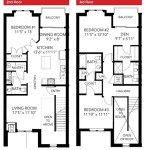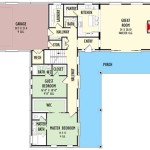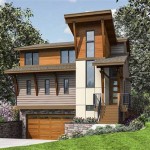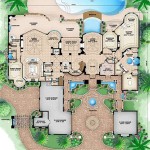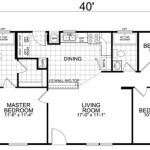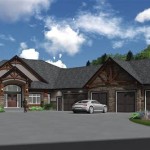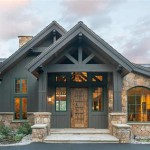400 Sq Ft Floor Plans: Maximizing Space and Functionality
The design of a 400 sq ft floor plan presents a considerable challenge and a significant opportunity. These spaces demand ingenuity in layout, furniture selection, and storage solutions to create a functional and comfortable living environment. Successfully navigating this design process requires a strategic approach that prioritizes efficiency and adaptability. Understanding the core principles of space optimization is paramount.
Effective 400 sq ft floor plans are not simply shrunk-down versions of larger layouts. They necessitate a fundamental rethinking of how space is used and how inhabitants interact with their environment. The goal is to create a home that feels larger than its actual dimensions, offering a sense of openness and comfort despite the limited square footage. This article explores key considerations and strategies for designing effective 400 sq ft floor plans.
Prioritizing Multifunctional Furniture
In a small space, furniture must serve multiple purposes. This is not merely a design aesthetic; it's a logistical necessity. Items that can transform, fold away, or provide hidden storage are essential for maintaining a clutter-free and adaptable living space. Selecting pieces that offer dual functionality is vital.
Consider a sofa bed that serves as a seating area during the day and a comfortable sleeping space at night. Ottomans with built-in storage can hold blankets, pillows, or other household items. A dining table that can fold down or expand to accommodate different numbers of guests is also a valuable asset. Wall-mounted desks can free up floor space when not in use, providing a dedicated work area without permanently occupying valuable square footage. Choosing furniture with a light and airy aesthetic, both in color and design, can further enhance the feeling of spaciousness.
Beyond individual pieces, consider how different furniture elements can work together to create flexible zones within the space. For example, a room divider can separate the sleeping area from the living area, providing privacy and definition. Similarly, a bookshelf can serve as both a storage solution and a visual barrier, creating distinct areas for different activities. The strategic placement of furniture can significantly impact the perceived size and functionality of the space.
The scale of furniture is also critically important. Overly large pieces can overwhelm a small space, making it feel cramped and claustrophobic. Opt for furniture that is proportioned to the size of the room, avoiding bulky or oversized items. Consider modular furniture, which can be rearranged and reconfigured to suit different needs and preferences. This adaptability allows the space to evolve and adapt over time, providing long-term flexibility.
Optimizing Vertical Space and Storage
When floor space is limited, maximizing vertical space becomes crucial. Utilizing walls for storage and display can free up valuable floor area and create a more organized and visually appealing environment. Shelving is a primary component of vertical storage optimization.
Floor-to-ceiling shelving units can provide ample storage for books, decorative items, and other household essentials. Open shelving can create a sense of openness, while closed cabinets can conceal clutter and provide a more streamlined appearance. Consider incorporating a mix of open and closed storage to create a balanced and visually interesting design. Wall-mounted cabinets and floating shelves can also provide additional storage without taking up valuable floor space.
Beyond shelving, other vertical storage solutions include hooks, racks, and vertical organizers. These can be used to store clothing, accessories, kitchen utensils, and other items. Consider installing hooks on the back of doors or inside closets to maximize storage capacity. Vertical organizers can be used to store shoes, bags, or other items in a neat and orderly manner. The key is to think creatively about how to utilize every available inch of vertical space.
Mirrors can also be used to enhance the sense of space in a small room. By reflecting light and creating the illusion of depth, mirrors can make a room feel larger and more open. Consider placing a large mirror on one wall or using multiple smaller mirrors to create a gallery wall. The strategic placement of mirrors can significantly impact the perceived size and brightness of the space. In addition to storage consider vertical gardens or plant walls. These offer a visually appealing green element within the space, adding a refreshing touch. These elements also improve air quality, contributing to a healthier living environment.
The entryway is also an area where vertical space can be easily optimized. Utilizing over-the-door organizers or wall-mounted shelves can efficiently manage coats, shoes, and other everyday items. This is especially important in a small space where keeping clutter at bay is essential for a sense of order and well-being.
Creating Zones with Light and Color
In a 400 sq ft space, partitioning with physical walls is often impractical and can make the space feel even smaller. Instead, using light and color to define different zones can create a sense of separation and functionality without sacrificing valuable space. Strategic use of these elements can significantly enhance the perception of space and create distinct areas for living, sleeping, and working.
Different lighting schemes can be used to differentiate between zones. For example, brighter, more focused lighting can be used in the work area, while softer, more ambient lighting can be used in the living area. Task lighting can be used to illuminate specific areas, such as a reading nook or a kitchen counter. Layering different types of lighting can create a more dynamic and visually appealing environment. Dimming capabilities offer flexibility and allow adjustments to suit different activities and moods. Using smart lighting systems can further enhance flexibility and energy efficiency.
Color can also be used to define different zones within the space. Lighter colors tend to make a room feel larger and more open, while darker colors can make it feel smaller and more intimate. Consider using lighter colors on the walls and ceiling to create a sense of spaciousness. Accent walls in brighter or bolder colors can be used to define specific areas or to add visual interest. The color palette should be cohesive and harmonious, creating a sense of flow and continuity throughout the space.
Area rugs can be used to define different zones on the floor. A rug can delineate a living area within an open floor plan, creating a cozy and inviting space. Different textures and patterns can be used to add visual interest and to differentiate between zones. A rug can also help to absorb sound, making the space feel quieter and more comfortable. Using rugs of varying sizes and shapes can further enhance the visual interest and create a more dynamic design.
In instances where privacy is needed, particularly in the sleeping area, incorporating sheer curtains or screens can provide a sense of separation without completely closing off the space. These elements allow natural light to filter through while still offering some level of privacy. These are versatile solutions for creating distinct zones without compromising the openness of the space.
The use of plants can also contribute to defining zones and enhancing the overall ambiance. Strategically placed plants can create natural dividers, adding a touch of greenery and improving air quality. Larger plants can serve as focal points, drawing the eye and creating a sense of depth. Smaller plants can be used to add pops of color and texture, enhancing the overall aesthetic.
Successfully designing a 400 sq ft floor plan requires a careful balance of functionality, aesthetics, and personal preferences. It's a process that demands creativity, attention to detail, and a willingness to embrace innovative solutions. The key is to maximize every inch of space and to create a living environment that is both comfortable and functional.

Cottage Plan 400 Square Feet 1 Bedroom Bathroom Floor 1502 00008 America S Best House Plans

400 Sq Ft Adu Floor Plans Blog Eplans Com

400 Square Foot Sun Filled Tiny House Plan

400 Sq Ft Adu Floor Plans Blog Eplans Com

Country Plan 400 Square Feet 1 Bedroom Bathroom Floor 034 00176 America S Best House Plans

400 Sq Ft Adu Plans Balsa 1 Bed Modern Backyard Home

26 400 Sq Ft Floorplan Ideas Apartment Floor Plan How To Plans

400 Sq Ft Adu Floor Plans Blog Eplans Com

400 Sq Ft Adu Floor Plans Blog Eplans Com

House Plan Design Ep 118 400 Square Feet 2 Bedrooms Layout

